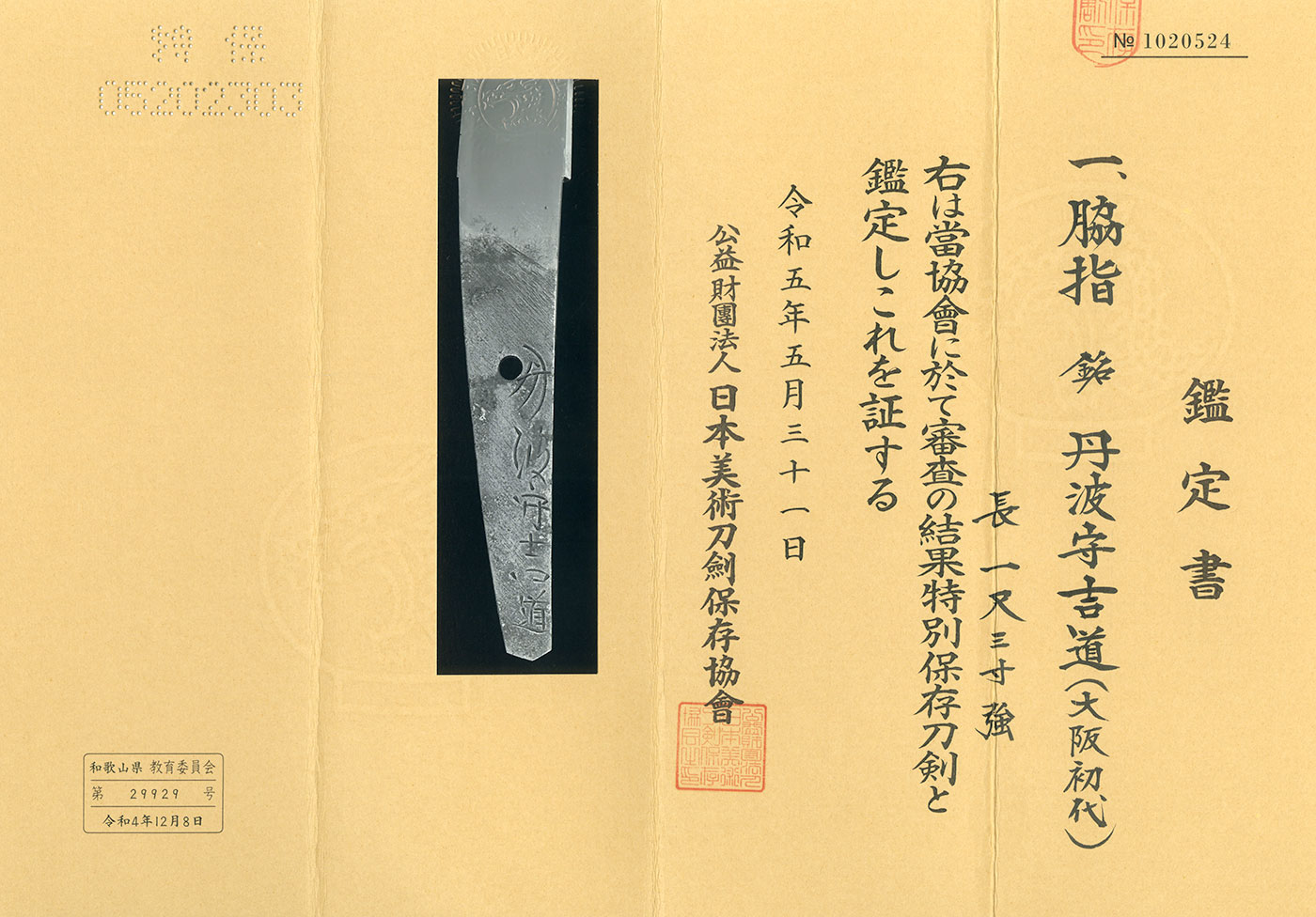Ordering number: 23431
Wakizashi: In Shirasaya (NBTHK Tokubetsu Hozon Token)
Inscription (Mei): Tanba-no-Kami Yoshimichi (Osaka Shodai)
Shinto: Josaku: Ryowazamono: Settsu
At our company, we categorize swordsmiths’ works as Saijo-saku (top quality), Jojo-saku (excellent), Jo-saku (good), and Futsu-saku (normal) based on their craftsmanship. This work is classified as Jojo-saku, signifying its excellent quality among Tanba-no-Kami Yoshimichi’s (First Generation of Osaka) works.
Polished.
Habaki: Gold-colored single Habaki
Blade Length: 39.3 centimeters (15.47 inches)
Curvature (Sori): 0.9 centimeters (0.35 inches)
Peg Hole (Mekugi-ana): 1 hole
Width at the Base (Motohaba): 2.99 centimeters (1.18 inches)
Thickness (Kasane): 0.63 centimeters (0.25 inches)
Sword Weight: 350 grams
Era: Early Edo period, around the Joo era (1652)
Shape: The sword has a slightly wide body, ordinary curvature, and a deep sori, making it a tanto with a straight profile.
Jigane (Forging Patterns in Steel): The steel displays a well-forged itame hada with a darkish jigane surface.
Hamon (Temper Pattern): The hamon pattern features a straight temper from the hamachi (blade notch) followed by an intense gunome-midare pattern with a lively appearance, continuing into the entire body of the blade. The boshi forms a rounded shape with a slight sweep.
Special Features: Tanba-no-Kami Yoshimichi (First Generation of Osaka) was the second son of the first-generation Kyoto Tanba-no-Kami and received the title Tanba-no-Kami during the Shoho era. He is known as Osaka Tanba, as he did not incorporate the kikumon (chrysanthemum crest) into his works but instead created a gunome-midare pattern similar to Kyoto Tanba’s. It is believed that they worked closely together, sharing techniques and contributing to the creation of the wavy hamon pattern. Yoshimichi became the founder of Osaka Tanba and excelled in producing the wavy hamon, surpassing Kyoto in generations.
From Aoi Art: This work is a rare, slightly longer hira-zukuri wakizashi with a strongly undulating gunome hamon pattern that is reminiscent of the works of Kyoto’s first-generation Tanba-no-Kami. The intense gunome hamon pattern is particularly pronounced in the middle section, extending towards the tip, making it remarkably similar to the works of Kyoto’s first-generation Tanba-no-Kami. This demonstrates that they likely shared techniques and competed in creating the undulating hamon pattern. Yoshimichi is also known as Sanpin Kinuemon, the founder of Osaka Tanba.
NBTHK Tokubetsu Hozon Token paper
Aoi Art estimation paper: Whole Oshigata by Tsuruta Ayaka




